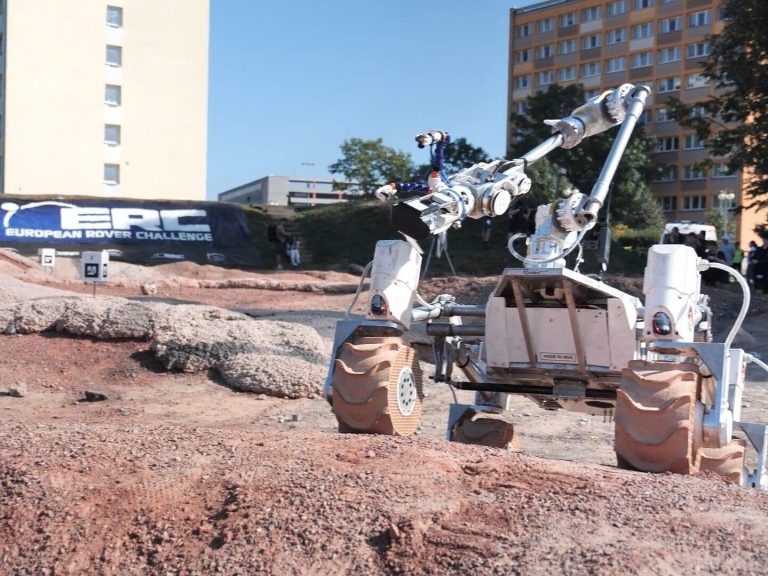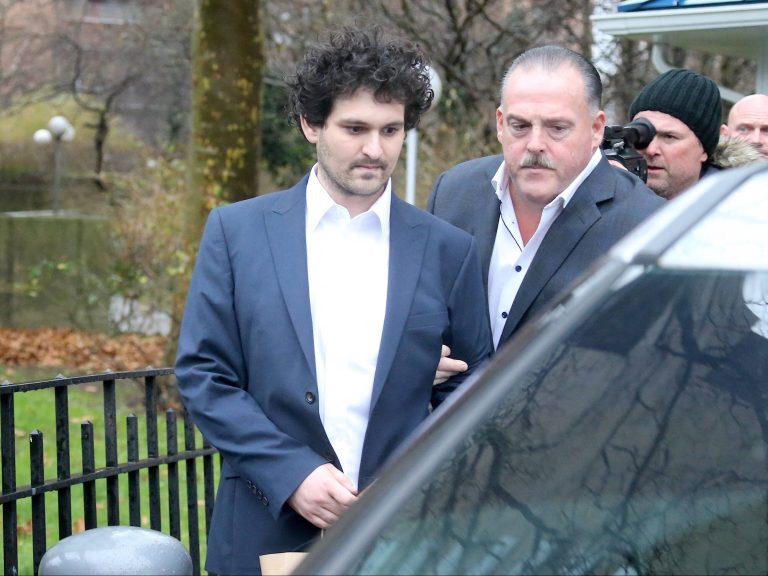Penguins and climate change under the microscope of Polish scientists. Drones help in the study of Antarctica

Extremely harsh weather conditions and a distance of over 14,000 km kilometers from home – this is the everyday life of Polish scientists who work at the Antarctic research stations named after H. Arctowski and AB Dobrowolski. We decided to take a look at some of their work.
Penguins, cold, ice and endless space – these are the elements that first come to mind when we hear the word “Antarctica”. This unusual area has intrigued researchers for years who wanted to find out what secrets the least known continent in the world hides.
Polish scientists are conducting large-scale research, which is to bring the conditions in by far the coldest area of the world closer.
Polish kingdom on King George Island
Polish Antarctic Station named after H. Arctowski is located on King George Island in the South Shetland archipelago. It is over 14,000 kilometers away from Poland. kilometers. The first independent Polish expedition set off to Antarctica at the end of 1975. The researchers set out to estimate how large the stocks of fish and krill are in the Southern Ocean.
When they arrived, they saw that the nearby source of fresh water and easy access for supply ships made it a perfect place to set up a research station. Henryk Arctowski, who took part in the historic expedition on the ship Belgica in the years 1897-1899, was chosen as its patron.
The station has been operating continuously since 1977. Currently, there are two field bases on King George Island: Demay located on the shore of Paradise Bay, between Cape Demay and Cape Sea Lions and Lions Rump located in the eastern part of the island. It is worth emphasizing that Poland is one of 20 countries from around the world that has its own, year-round scientific and research station in Antarctica.
Penguins under the microscope of scientists
Researchers conduct research in areas such as geology, oceanography, climatology, ecology and genetics. Among the most important research topics undertaken are: the variability of polar ecosystems, the impact of climate change in the region on the functioning of marine and terrestrial ecosystems, and the evolution of biodiversity.
Dr. hab. Robert Bialik, head of the Department of Antarctic Biology of the Institute of Biochemistry and Biophysics of the Polish Academy of Sciences, who regularly participates in research at the station, told Wprost.pl that research is currently focused primarily on the implementation of three main projects, for which the National Science Center is responsible for financing.
– As part of the SONATA grant entitled: “The history of the glaciations of King George Island”, it is planned to reconstruct the recession and behavior of the ice cover since the Last Glacial Maximum around Admiralty Bay. The SONATINA project entitled “Parasites of penguins of the genus Pygoscelis nesting in the South Shetland Islands, Maritime Antarctica” is intended to assess the prevalence of infection of selected ectoparasites and the blood parasites they transmit in three species of penguins – Adelie penguins, Gentoo penguins and Masked penguins – he says.
In addition, 2023 will be the last year in which the OPUS project entitled “Quantification of sediment transport from South Shetland glaciers based on selected remote sensing methods”. Dr. hab. Robert Bialik explains that it is intended to enable the assessment of the advantages and limitations of existing algorithms for determining the turbidity and concentration of suspended substances in the polar regions on the basis of available satellite images and images obtained using unmanned aerial vehicles.
How drones help Polish scientists?
The scientist admits that in recent years (2014-2023) research conducted at the Polish Antarctic Station H. Arctowski are largely based on the use of drones – researchers from the Institute of Biochemistry and Biophysics of the Polish Academy of Sciences, which manages the station, belong to the second nation after the United States in the number of works using unmanned aerial vehicles in Antarctica. During the implementation of the research tasks, over 600 photogrammetric missions were performed, including 32 flights using the PW-ZOOM aircraft, built for the purpose of the research.
They were conducted in three Antarctic Specially Protected Areas of King George Island: Potter Peninsula, Lions Rump and on the West Coast of Admiralty Bay.
– The main purpose of the research was to assess the impact of climate change on Antarctic biodiversity and ecosystems, as well as to estimate the concentration of suspended substances in the surface layer of water delivered from the South Shetland glaciers to their shelf areas – emphasizes Dr. hab. Robert Bialik.
– It seems that due to the use of drones, which are still a new technology in Antarctica, as well as the fact that learning about the phenomena related to broadly understood climate change has a direct impact on every human being, and thus the importance of this research for the global society is enormous , then all scientific results obtained in this area should be considered the most important of those conducted at the Arctowski Station – he explains.
Environmental monitoring and climate change
The scientist adds that environmental monitoring has also been developed at the station in recent years. Meteorological is used to determine the climatic conditions at the station, and ecological allows you to determine the size and condition of the animal population. Researchers also looked at tourism in the polar regions and its impact on the natural environment.
– There is a ringing program for Antarctic cormorants and brown skuas. Using telemetry methods, we try to determine the winter migrations of these birds, as well as determine their feeding places – he says.
Dr. hab. Robert Bialik points out in an interview with Wprost.pl that Stacja im. From the very beginning, H. Arctowski conducted an extensive scientific program, which distinguished it from many Antarctic stations located in the South Shetland Islands, which are often military bases.
“The focus on scientific research has resulted in the first records of dozens of zoobenthos and zooplankton species for the South Shetland Islands. As pioneers, using the logistical possibilities of having two helicopters in the early 1980s, we described the occurrence of many penguin colonies in the northern and eastern parts of the island, which is still difficult to replicate today, he says.
Currently, researchers are trying to rediscover these colonies, discovered in the early 1980s, using satellite images and logistic possibilities offered by modern seagoing boats.
What is life like on a research station?
Life at an Antarctic research station is not easy. Antarctica is one of the most inaccessible regions in the world. In winter, temperatures in the region range from -20˚ to -65˚.
When asked about the greatest difficulties that researchers have to face, he emphasizes that King George Island is an island with many bays. – Our station is located in the depths of the largest of them, more precisely in Admiralty Bay. One of our field bases, Refugium Lions Rump, is located in the neighboring King George Bay. These conditions mean that most places where research is conducted can only be accessed by zodiac pontoon boats – he explains. “This makes any activity limited by weather conditions, which are very difficult in the South Shetland Islands and their sudden volatility is often unpredictable,” he adds.
Dr. hab. Robert Bialik admits that the summer season at the Polish Antarctic Station falls on Christmas. – This aspect always causes a kind of melancholy and homesickness that everyone who takes part in the expedition has to deal with – he emphasizes.
Dobrowolski station reactivated after 40 years
The Arctowski station is not the only trace of the presence of Poles in Antarctica. In 2022, the station named after AB Dobrowolski. It is located in the eastern part of the continent, specifically in the Bunger Oasis. It was built on the rocks on the shore of Figure Lake. The oasis is an almost unique place in the world due to, among others, to climatic specifics. For scientists, it is an extremely attractive place to conduct research due to the unpolluted natural environment and direct access to the geological base of the continent.
The first research facility in this place was established by Soviet scientists in 1956. They only used it for two years due to the great difficulty of getting to the inland base. In 1959, the research station was officially taken over by Polish researchers. The facility owes its name to Antoni Dobrowolski, a Polish geophysicist and polar explorer.
How scientists accidentally discovered a new island
In January 2022, after more than 40 years of absence, Polish scientists led by Prof. Marek Lewandowski. The expedition was organized by the Institute of Geophysics of the Polish Academy of Sciences. The researchers set themselves the goal of setting up geophysical stations that will operate all year round and will be fully automated and autonomous in terms of power supply.
The scientific expedition turned out to be a huge success. Polish experts managed to collect over 200 kg of rock samples from distant areas, which will be analyzed. These are unique samples from places where man has never set foot. Moreover, scientists discovered a new small island completely by accident, only because the pilot made a mistake.
Cooperation between science and business
The Institute of Geophysics of the Polish Academy of Sciences, which supervises the work at the station, emphasizes that Bunger’s Oasis is an ideal place for cooperation between science and companies that deal with technologies for the construction of renewable energy sources. During this extraordinary trip, it is planned to: setting up the antenna for ionosphere research.
The analysis of its condition will enable better forecasting of space weather, which, according to preliminary scientific analyses, has an impact on the global climate change. – Reuse of the St. AB Dobrowolski creates new opportunities for our country to develop front-line research techniques and related modern technologies – explains the Institute of Geophysics of the Polish Academy of Sciences.





